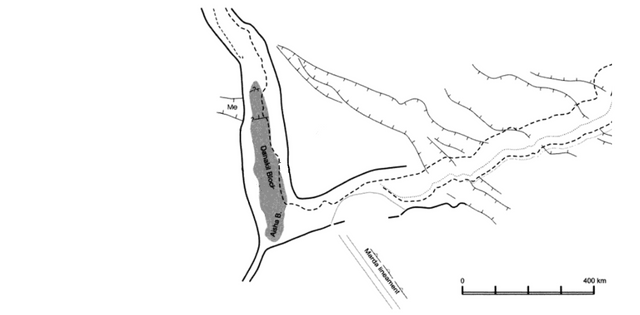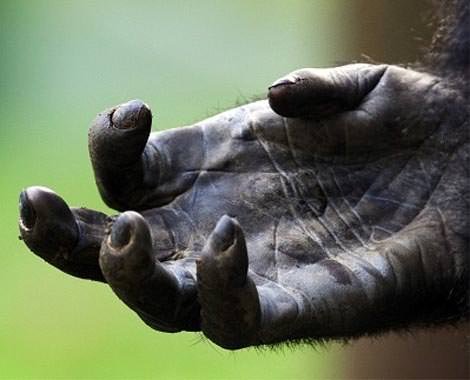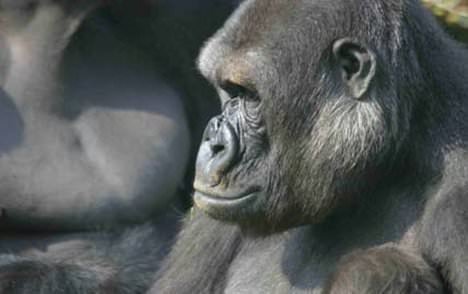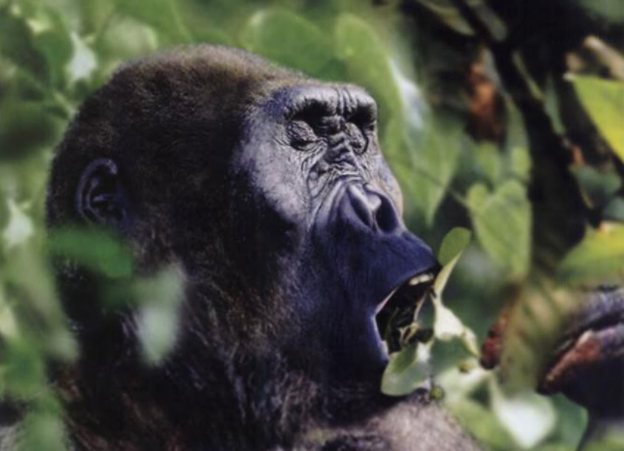The gorilla lineage may be a result of the Ethopian plateau forming, from compression of the contintental crust at the Afar tripple junction, which later by extension formed the Afar rift as well as the east african rift. At high elevations above the frost line, there is less fruit, and it is also colder, and so a lot of body fat, as well as adaptations to forage stems and leaves, are natural to that environment.
The Danakil micro-continent broke away from Ethiopia around 6 million years ago, and geographical isolation on that island could have been what caused the chimpanzee-human-last-common-ancestor (CHLCA) split and speciation in the human lineage.
It is plausible that there were gorilla ancestors on Danakil, since the island would have been quite large, 500 km from north to south. When isolated, island gorillas would then have mated with Ardipithecus, which led to the Paranthropus lineage where P. deyiremeda[1] is the earliest Paranthropus in the fossil record.

In that model, then at 6–4 Ma, there could have been introgression of genes for hand morphology2, and possibly for hand motor skills, which had developed independently in gorilla to pick leaves and stems, as an adaptation to high elevations as the Ethiopian plateau formed.

The increased hand dexterity in Au. anamnesis and afarensis made them better at foraging along the coast-line, shellfish and clams, and contributed to brain development (both the diet and the challenge of foraging it), which was then passed to the island gorillas (which could be named Gorillae danakilus similar to Australopithecus afarensis is named after the Afar region where its fossils were deposited from faulting of the Danakil coast-line[3]) and that would be the reason genes for brain development are shared across human and gorilla today.[4]
Genes for hearing were passed from the gorilla lineage to the human lineage at the introgression event (6–4Ma) as well as genes for ear morphology, visible today in that gorillas and humans have identical ears.

The water-adaptations in Australopithecus afarensis and Australopithecus anamnesis include a thick layer of subcutaneous fat, which contrasts to the chimpanzee lineage that has very little total body fat and almost no subcutaneous fat, and was the result of gene transfer from the gorilla lineage.
Gorillas have plenty of subcutaneous fat, where Zihlman et al report 13% and 16% in two female gorilla from a paper in 2000[5], and total body fat up to 44% (Zihlman and McFarland, 2000).
Genes for storing fat, which had evolved in gorillas over 5 million years as an adaptation to cold temperatures high up in the Ethiopian plateau, were transferred to human lineage in the introgression event at 6–4Ma.
Paranthropus as a hybrid of proto-gorillas and proto-humans
P. deyiremeda appears in the fossil record at 3.5Ma, as the earliest species in the now extinct Paranthropus lineage, a genus characterized by human-like feet and pelvis, and gorilla-like teeth, jaws and craniums with sagittal crests for strong chewing muscles.

References
New species from Ethiopia further expands Middle Pliocene hominin diversity (2015)
Tectonic history of Danakil and the origin of Pliocene vertebrate fossils in the Afar region (2017)
Insights into hominid evolution from the gorilla genome sequence (2012)
Notes
Napier and Napier (1967) have suggested that the gorilla might have an anatomical advantage when it comes to manual dexterity, over other non-human great apes. Dexterity, in these terms, is largely a matter of the ability to perform a unimanual precision grip (Napier 1960); the “opposability index”, the ratio of the length of the thumb to that of the index finger, places the gorilla closest to the human: orangutan 0.43, chimpanzee 0.47, gorilla 0.54, human, 0.67 (Schultz 1930). In contrast, the relatively long fingers of chimpanzees and orangutans reflect adaptation to arboreal hanging and brachiation.
We also identified cases of pairwise parallel evolution among hominines. Human and chimpanzee show the largest amount, with significantly more shared accelerations than expected by chance, whereas gorilla shares more parallel acceleration with human than with chimpanzee across a range of significance thresholds (Supplementary Fig. 8.3). Genes involving hearing are enriched in parallel accelerations for all three pairs, but most strongly in gorilla–human (Supplementary Table 8.4d–f), calling into question a previous link made between accelerated evolution of auditory genes in humans and language evolution. It is also interesting to note that ear morphology is one of the few external traits in which humans are more similar to gorillas than to chimpanzees.
Wow!! really interesting post,,,,,,,,,
This would be very beautiful!!!
Downvoting a post can decrease pending rewards and make it less visible. Common reasons:
Submit
you post some really interesting posts good to read always
Downvoting a post can decrease pending rewards and make it less visible. Common reasons:
Submit